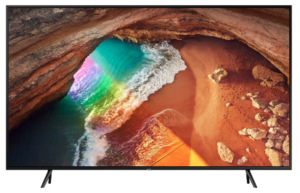There are
so many televisions on the market today; how does one possibly choose which one to purchase? This is a common problem to be sure, and it only grows more difficult by the year. Of course, price is the most obvious answer and, if price is one's primary concern, then most of this article will seem irrelevant as it covers more in-depth features. For those who want more from a television, however, I will break down some of the more interesting things to consider when buying a new television today.

Primary Features
The most obvious features one should be looking for on a new 4K television are, naturally, size, brand, and price. These often go hand-in-hand- you can typically look at the price of a smaller brand's television then guess what larger ones will cost. Prices also vary widely based upon the brands of products, so
4K/UHD televisions have some features which, at this point, are fairly standard. First and foremost is HDR, or "High-Definition Range". This is a technology which notably improves a display's contrast, particularly in regard to darker parts of videos. HDR is quite common now, but is absolutely worth considering when shopping around.
Refresh rate is another commonly overlooked feature of televisions which can make a notable difference.
Secondary Features
One must always consider the number and type of connective ports available on the back of televisions when shopping around. This is a fairly obvious thing to consider, but not necessarily one which immediately comes to mind when picking out televisions. Specifically important are the number of HDMI ports and the presence, or lack thereof, of component capability. A lot of older devices, such as DVD players and video game consoles, require component cables to connect to televisions; adapters which can be expensive and bulky are otherwise required.
One should also consider how a TV will be displayed. Will it be mounted on the wall, or sitting on a TV stand? Will it need specific brackets to be mounted, or do they come with the television? These could be notable roadblocks down the line if not considered early enough. If a television has all of the features you desire while needing some extra work to be mounted, it could still be worth considering- if the price is right.
When shopping for a multisystem TV, it is vitally important to ensure that the television is, in fact, multisystem. Only certain retailers sell truly multisystem hardware; many have purchased TVs from Amazon only to be disappointed when it arrived and only worked in one region.
Conclusion
Ultimately, only you know what features you need most in your new multisystem 4K television. This article's goal has not been to tell you what is most important, but instead to provide ideas for what you might consider when shopping around. If you want to start shopping for a multisystem television, visit
220-Electronics.com. Run by experts in the field,
220-Electronics provides the best multisystem televisions at the best prices- guaranteed. Visit
220-Electronics.com today to get started!







